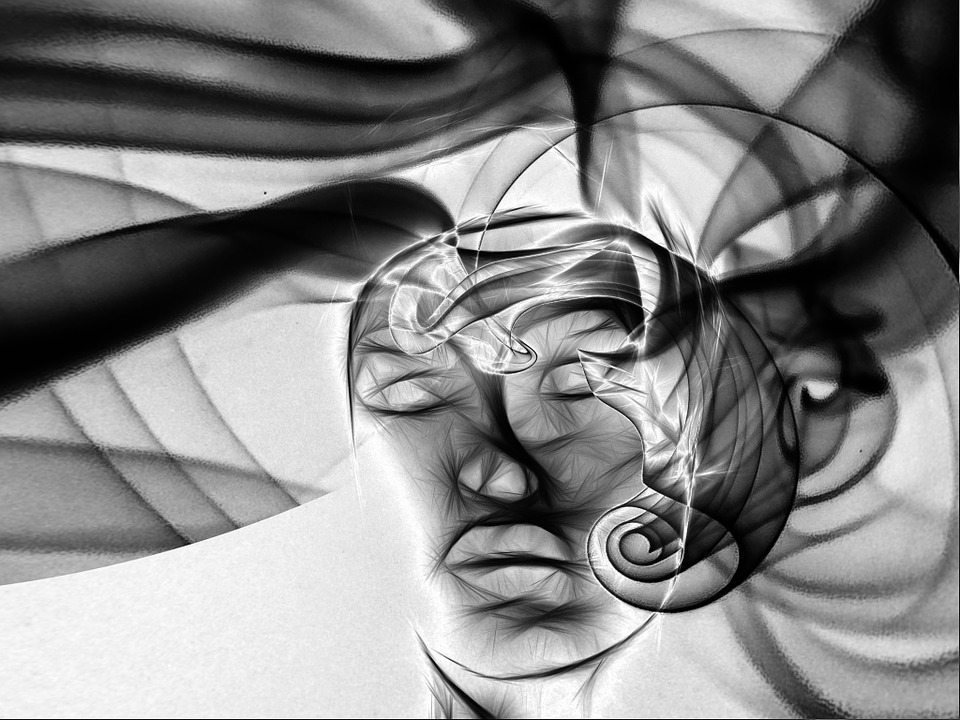A new randomized control trial published in the journal Complementary Therapies in Clinical Practice investigates whether elements of psychodynamic therapy and cognitive-behavioral therapy (CBT) can be combined effectively into an integrative treatment for anxiety. The researchers found that while CBT was effective in lowering anxiety symptoms, an integrative approach, featuring psychodynamic principles, was more effective than CBT alone.
“Although cognitive-behavioral therapy has yielded effective outcomes in most cases of mental disorder, the positive outcome rates of treatment responders in specific mental disorders have not been acceptable, especially if long-term outcomes are taken into account. This is the case for depressive disorders and some anxiety disorders such as social phobias or generalized anxiety disorders,” the researchers, led by Marzieh Orvati Aziz from Alzahra University in Iran, explain.
“The randomized controlled trials have provided some evidence, which shows that psychodynamic psychotherapy is superior to control conditions and is generally as effective as already established treatments for specific mental disorders.”

CBT is often considered the “gold standard” in psychotherapy due to the proliferation of studies on its effectiveness. This status has been contested as there is limited evidence that CBT is more effective when compared to other approaches. Also, meta-analytic research has found that psychodynamic therapy is as effective as CBT. These two approaches to psychotherapy are often seen as working toward different purposes, as CBT focuses on skill-building and behavioral changes, and psychodynamic therapy prioritizes gaining insight.
CBT is one of the shortest forms of psychotherapy with a planned duration of 10 to 20 sessions, depending on diagnosis, symptoms, severity, treatment goals, and conditions of the health care system. Practitioners of CBT often develop individualized and time-limited therapy goals that attend to the reduction of symptoms, reduce distress, and attempt to change the thinking and behavioral styles of their patients.
On the other hand, psychodynamic therapy includes long-term and short-term forms of treatment (7-40 sessions) and places a focus on self-discovery. Psychodynamic approaches improve mental health but attempt to create other positive changes that go beyond symptom-reduction, such as improved self-awareness and more authentic relationships.
Research in counseling psychology has investigated the similarities and basic principles across different theories of psychotherapy. There are a variety of common factors between therapies that include (but are not limited to): the therapeutic alliance, expectations of positive change, therapist’s qualities, logical understanding of client’s problems, and systematic therapeutic practices. Differences between therapeutic approaches usually include formulation, focus on past-vs.-present, among others.
“The discrepancies between various schools of psychotherapy have been more about techniques rather than basics to the extent that it can be said that all approaches express one word in a variety of ways. Differences in techniques are common and inevitable,” the researchers add. “In contrast with differences in techniques, other differences can be expressed in an integrated form, because there are no conflicts preventing them from being used simultaneously.”
For this reason, the study authors developed an integrative model of psychotherapy, where the client’s past experiences can be explored to gain insight into their present experiences, thoughts, behaviors, and emotions. The therapy also focused on developing skills for changing behaviors once they were better understood.
Although there is strong evidence suggesting that both CBT and psychodynamic therapy work, there is scarce research about the efficacy of such an integrative approach. The authors of this study were interested in the combination of psychodynamic and cognitive-behavioral therapies in hopes of merging the former’s stability (patients are less likely to relapse) and the latter’s effectiveness (remission occurs with fewer sessions).
The researchers developed a therapy manual that lasted 15-sessions and an experiment to evaluate the efficacy of the manual. The effectiveness of the manual was to be compared with traditional CBT. They identified 36 participants who had been diagnosed with ‘Generalized Anxiety Disorder,’ using a psychiatrist’s diagnosis, DSM-V clinical diagnostic interviews, and the Hamilton Rating Scale for Anxiety (HRSA).
Because generalized anxiety is often found to be comorbid with depression, the Beck Depression Inventory (BDI) was used to assess for a possible depression diagnosis. Those whose depression was their main concern were ruled out of the study.
Out of the 36 participants, the researchers randomly assigned twelve to each of the experimental groups (1 for integrative therapy and 1 for CBT) and the other twelve to a control group. The efficacy of each treatment was evaluated by assessing each participant’s symptoms and severity using the HRSA and BDI self-report surveys before and after they were exposed to psychotherapy.
The results suggested that CBT without the integration of psychodynamic therapy is effective in reducing generalized anxiety when compared to the control group. Similarly, integrative psychotherapy (psychodynamic therapy and CBT) was also effective. However, the integrative treatment was found to be more effective than CBT alone.
These results are novel, as no other study assessing the effects of the combined therapeutic approaches was identified. In a culture of psychotherapy where frameworks are often pitted against one another, this article illustrates the similarities and complementariness of different methods. Moreover, it highlights the strengths of both therapies and how they can be combined to alleviate client suffering efficiently and for a more extended amount of time.
The study suggests that an integrative form of therapy may be useful for anxiety. Although psychodynamic treatment is often ignored as a legitimate and evidence-based therapy, it is not only effective as a stand-alone approach (as evidenced by past studies) but can improve the effectiveness of other forms of therapy.
****
Orvati Aziz, M., Abolghasem Mehrinejad, S., Hashemian, K. & Paivastegar, M. (2020). Integrative Therapy (Short-Term Psychodynamic Psychotherapy & Cognitive Behavioral Therapy) and Cognitive Behavioral Therapy in the Treatment of Generalized Anxiety Disorder: A Randomized Controlled Trial. Complementary Therapies in Clinical Practice, 39, 101122 (Link)















Considering they were not treating a “mental illness”, I am not surprised that CBT alone did not have a great outcome, since CBT suggests to the client that their thoughts are false, and might result in feelings of failure in the client IF they are not able to change their thoughts.
However, psychotherapy might uncover that the thoughts are not the problem, but rather the underlying issues of the external world. Obviously, it is intertwined with the internal, as it should be.
Also, modalities not working or working would completely depend on who the clients are working with and I might suggest that if the “superior” “expert” adopts the thinking that there is something that needs fixing within the client, then the scene is set up for failure, since it does not allow for an unbiased situation.
The biggest issue here then, is the thought that one person in the room has a “mental illness”, and solely because of “symptoms”. There are no “symptoms”. There is expression and suffering.
It would only be a humane thing to do, to resist the urge to quantify someone’s hurts, suffering or difficulties within one’s own views. It is after all, how most therapists would respond to their own family. Why treat another human any different than your own family, especially if we are talking about “care” and “health”
There are no “experts” to someone elses misery.
And it is extremely unhealthy to see someone’s personality as “unhealthy”. It is the most damage anyone can do to a person who is highly suggestible. THAT is the ultimate damage and psychiatry is quite aware of it.
Report comment
You raise a very excellent point; no one but the individual is an expert on their own suffering. This is a core theme of person-centred therapy.
I appreciate also the very modern and forward thinking point of no personality is “unhealthy,” personality ‘disorders’ are the result of adapting to an environment in such a way that allows us to survive.
I would argue a mixed approach to counselling is most effective in helping indiviudals experiencing distress related to identity/personality, it is however only lip service when the counsellor and client relationship is obviously at the heart of any work done. Meaning, “is this client comfortable sharing their experiences with me?” “can I empathise with the conditions and experiences in such a way that I allow the client to be heard?”
I would argue we all have a genuine and authentic self – It’s not my job as a counsellor to decide what that authentic self looks like… It’s my job to use the tools, techniques and my own human experience to help a client to develop awareness whilst myself learning who the person in front of me really is.
Report comment
There are no manualized therapies that can overcome the constant existential threat the majority of us live under. It’s insulting to people’s intelligence that we keep getting these therapies repackaged as some sort of treatment when the cure is to dismantle the abusive power systems that keep folks oppressed and anxious.
Let’s start with calling out campaigns that increase anxiety, such as those encouraging people to “say something when they see something”.
Threat, and the fear response it provokes, is literally baked into the system.
Report comment
“So long as one of us is jailed we are none of us free”. Forget who said it. Great comment kindred.
Report comment
Thanks. It’s always a balancing act. I think individual people who happened to be called to the field of therapy *can* do amazing work in helping others heal. But not when the task is approached by addressing “symptoms” with “treatments” – especially not the manualized versions. Even psychodynamic therapy approaches distress in the wrong ways.
I wish there were greater progress toward humanizing distress and normalizing trauma-related behaviors and emotions so as to propel the effected to change the system rather than their response to it.
Report comment
I also think that the subconscious drive to preserve their job & expect the rest of us to have that as our top priority is a problem. A BIG one. I have read books on dissociation, because if you have buried trauma, the fact that that is going to cause a problem is common sense.
But in the books I did read, they stated than seeing a therapist was *mandatory.*. Oops, no it is not. I can see right through that.
Report comment
@kindred spirit & ThereAreFourLights:
Awesome comment. Awesome quote. Aw!
And no study, long or short, and no therapy, long or short, can replace common sense or human decency. And neither can they challenge a justice system that is two-tiered AT BEST, and is more like FOUR-tiered.
Report comment